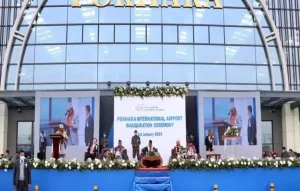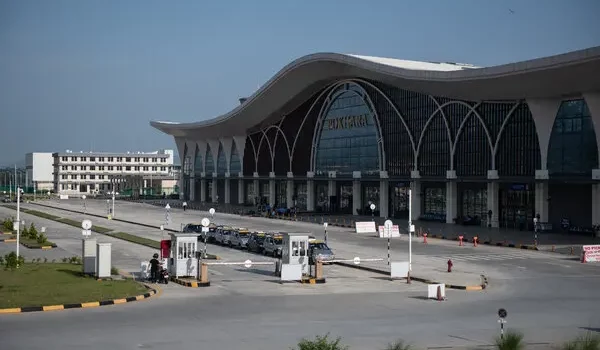
Introduction
Nepal, a nation celebrated for its natural beauty and rich heritage, has embarked on an ambitious journey – the construction of the Gautam Buddha International Airport. However, what appears to be a development milestone is, in reality, a multifaceted conundrum. This article dissects the intricacies of Nepal’s colossal contract with China for the airport project, scrutinizing the implications it holds for the economy, national debt, and the host of challenges it presents.
Nepal’s Ambitious Infrastructure Project
Nepal’s vision for the Gautam Buddha International Airport is nothing short of audacious. This transformative project aspires to establish Nepal as an international aviation hub, fostering tourism, trade, and connectivity. The all-encompassing contract with China encompasses the construction of modern airport facilities, runways, and vital infrastructure. This ambitious endeavor signifies a pivotal shift in Nepal’s approach to economic development, promising both opportunities and complexities.
Examining the Fiscal Landscape: Nepal’s Debt Dynamics
The pursuit of an infrastructure project of this scale inevitably comes with profound financial implications. Nepal’s national debt, a long-standing concern, takes center stage in this scenario. The colossal financial investment required for the Gautam Buddha International Airport might strain Nepal’s fiscal resources, potentially leading to an increase in national debt. This article unravels the intricacies of Nepal’s financial predicament and scrutinizes whether this investment aligns with the country’s long-term economic goals.

Unpacking the Contract: A Comparative Table
To gain a comprehensive view of the Nepal-China contract and the Gautam Buddha International Airport project, we present a comparative table encapsulating the benefits and challenges:
| Aspect | Benefits | Challenges |
|---|---|---|
| Financial Impact | Increased tourism, trade, and employment. | High initial cost and debt implications. |
| Infrastructure Quality | Modern airport facilities and international connectivity. | Ensuring quality construction and management. |
| Geo-Political Relations | Strengthened ties with China. | Balancing relationships with other nations. |
Charting a Path Forward: Balancing Act
As Nepal forges ahead with its visionary but complex endeavor, striking a balance between the benefits and challenges becomes a paramount concern. This section delves into the strategies that Nepal can employ to ensure the success of the Gautam Buddha International Airport project while wisely managing its debt. Practical advice for policymakers and stakeholders is offered as a roadmap for navigating the intricate challenges this massive project presents.
Conclusion: The Nexus of Development and Dilemma
In conclusion, the Nepal-China contract for the construction of the Gautam Buddha International Airport represents a pivotal moment in Nepal’s pursuit of economic development. The project promises the allure of increased tourism, trade, and connectivity, but it equally presents formidable financial challenges. Nepal’s journey to a prosperous future hinges on mastering the art of balance, weaving ambition with fiscal prudence. By adeptly addressing these challenges and making informed decisions, Nepal can navigate toward sustainable economic growth, securing the well-being of its citizens and the nation’s prosperity.










